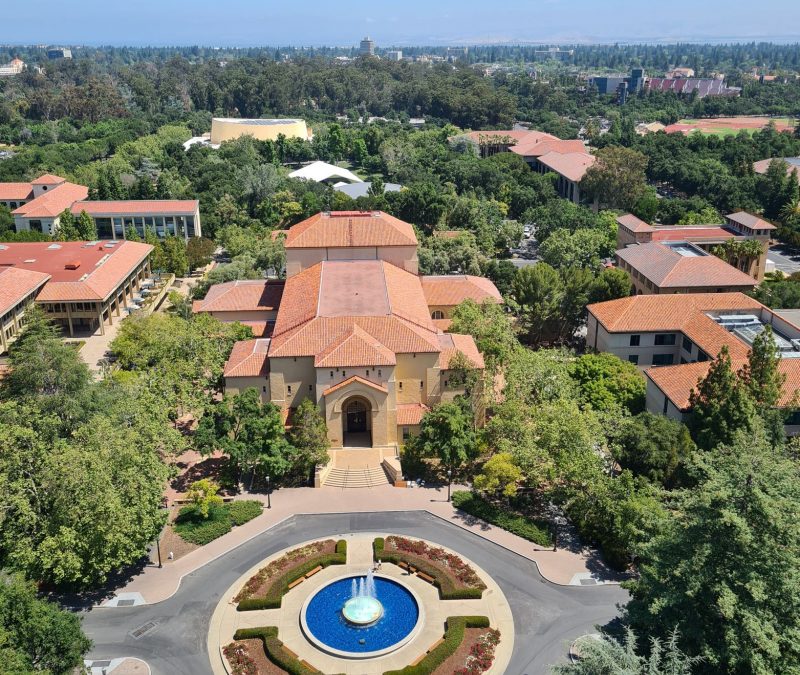During our second “Learning Expedition” in Silicon Valley, we saw the American leadership in the field of generative AI, a type of artificial intelligence system capable of generating text on demand, images or other media in response to queries via learning processes from huge databases. This leadership is fueled by startups such as OpenAI, Midjourney, and the upcoming project X.ai by Elon Musk, as well as digital giants like Google with Bard and Microsoft, which is a capital partner of OpenAI. Facebook with its freely accessible Llama 2 language model and Amazon also have strong ambitions in the AI field, with ongoing projects or already integrated solutions.
Thanks to artificial intelligence, these major digital players will strengthen their leadership in their respective domains, including enterprise applications, search engines, e-commerce, and recruitment solutions. OpenAI and Bard, along with other actors, will also benefit from top-tier cloud infrastructure through their collaboration with Google and Microsoft. Indeed, the cognitive and machine learning capabilities of AI rely on large volumes of real-time accessible data in the cloud, supported by robust architectures. American leadership in the AI field is undeniable, but it’s also worth praising the ambitions of Mistral AI, a French startup that recently raised 105 million euros to develop and democratize its open-source generative AI.
Generative AI represents a significant potential driver for improving business productivity, which is reflected in a 31% increase in venture capital investments in the first quarter in Silicon Valley, mainly due to the enthusiasm of entrepreneurs and investors for this technology. As summarized by John Hennessy, former president of Stanford University and current chairman of Alphabet, today’s artificial intelligence should be viewed as an “amplifier,” a concept similar to Microsoft’s notion of a “copilot.”
Other topics also remain prominent in Silicon Valley, such as decentralized finance, semiconductors, climate change, mobility, and quantum computers, which will soon be capable of processing vast amounts of data and accelerating the development of proprietary algorithms in key sectors such as energy, chemistry, and automotive. Life sciences thrive primarily in Boston, which maintains its global leadership due to its proximity to Harvard and MIT universities.
Europe has recognized strengths among influential entrepreneurs and investors in Silicon Valley, particularly in industry, decarbonization, climate transition, and mobility. Some fundraising efforts are impressive, such as VERKOR (352 million euros), a French startup developing lithium-ion batteries for electric vehicles and energy storage, or Hy2gen (200 million euros), a German startup building and operating green hydrogen production plants and hydrogen-based fuels. POWERDOT (150 million euros), a Portuguese startup investing in and operating electric vehicle charging stations, is also noteworthy.
Although TESLA has taken a considerable lead in electric cars, batteries and autonomous driving systems, Europe retains significant strengths in these areas thanks to the strong involvement of car manufacturers in this mobility revolution and some ambitious startups like NORTHVOLT in Norway, VERKOR in France and SONNEN in Germany have very promising development projects. Europe also has strengths in other areas related to climate change, such as renewable energy, nuclear and agtech focused in sustainable food.
Venture capital players in Silicon Valley are closely watching developments in Europe and are ready to invest more in startups or scale-ups, either by opening offices in Europe, like Bill Gates’ Breakthrough Energy Ventures fund in the climate change sector, or by offering companies to establish part of their management teams in Silicon Valley to capture the American market.
Furthermore, an interesting movement is in full swing, known as “Corporate Innovation.” Increasingly, large corporations decide to invest in startups by taking stakes, as part of a strategic approach to the development and innovation of their group. These investments are made either through the creation of a Corporate Venture fund similar to a venture capital fund or by establishing a dedicated structure within the group. This approach helps resolve the innovator’s dilemma, as described by Clayton Christensen, by leveraging both existing activities and the exploration of new enterprises through a “spin-along” approach. “Spin-alongs” are distinct organizational units that remain under the control of the parent company to support innovation while ensuring its long-term survival and success. This movement is legitimate for “Corporate” companies, who understand that innovation is the main driver of growth. In the last years, research on Corporate Innovation was led by Charles O’Reilly (Stanford Graduate School of Business), and Michael Tushman (Harvard Business School)―who have decades of experience helping entrepreneurial-minded executives activate employees to become Corporate Explorers.
During our stay, we wondered about the need to develop more venture capital funds in Europe in order to create global champions capable of competing with American and Chinese players. Our interlocutors from Silicon Valley pointed out that it is often “small” countries (Nordic, Baltic countries, etc.) that manage to make these world champions emerge in Europe, while larger countries such as France or Germany often have a more national approach in their operations. This reflex is also present in the Silicon Valley, where the ecosystem operates mainly locally, without any real collaboration with other North American hubs such as Boston, New York or Texas. The main European hubs (Paris, Berlin, London, Amsterdam, Munich, Stockholm, Riga, etc.) thus function similarly to American hubs.
Key criteria explaining the success of the Silicon Valley ecosystem include the alignment of capital and talent, a positive attitude towards immigration, a strong entrepreneurial culture focused on risk-taking, an efficient and developed professional network, research laboratories within high-performing and business-oriented universities, as well as the willingness to engage locally and within this network, hence the idea of “intranationalization” where companies innovate and globalize while remaining rooted locally.
Over the past sixty years, Silicon Valley has transformed modes of communication, information, work, entertainment, and social interaction, with its successes but also sometimes its excesses. This achievement is primarily due to its human capital, some of which comes from immigration, its territory, its global openness, its network that has benefited from the support of federal government, universities, and the defense sector. It also owes its success to a carefully controlled communication of its image. This symbiosis between academia, the financial sector, high-tech industries, and associated services (legal, intellectual property experts, etc.) remains unique to this day. It’s up to Europe to take this into account, focus on its strengths, and facilitate the creation of tomorrow’s champions who will continue to transform our lives.
Senior Partner ALHAMBRA INTERNATIONAL.



